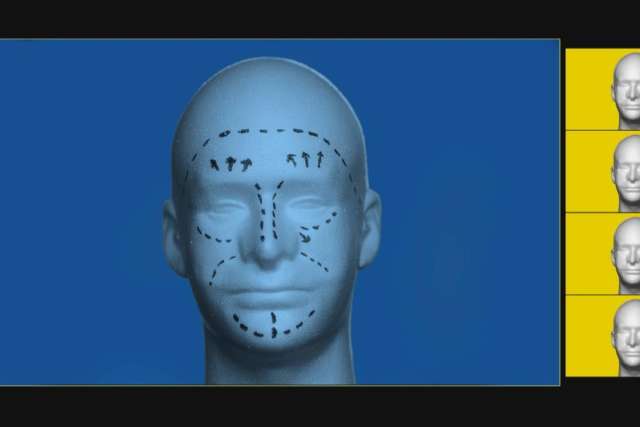If staring at your face all day in Zoom meetings has you thinking your appearance could use a little refresh, you’re not alone.
Interest in cosmetic procedures — from fillers to facelifts — has spiked during the COVID-19 pandemic and shows no signs of slowing.
“It’s huge,” Ladan Shahabi, MD, director of aesthetic surgery at UCLA Santa Monica Medical Center, says of the increased interest. “So many people are working virtually, and they’re noticing on camera the loss of volume in their cheeks, the jowls, their skin texture. So I have seen such an uptick. People are coming in saying, ‘What can you do to help?’”
According to a 2020 published in Facial Plastic Surgery & Aesthetic Medicine, 40% of respondents who had never tried cosmetic procedures before have been inspired to pursue them based on how they look on video-conferencing platforms. Most expressed interest in non-surgical options including neurotoxins (such as Botox) and injectable fillers.
“I think there are a lot more patients now that are having those procedures done that hadn’t had it previously,” says Andrew Vardanian, MD, a plastic surgeon at UCLA Health. “I’m sure it’s multifactorial, based on the economy as well. They couldn’t go on vacations and couldn’t go to concerts, so they’re using that money to spend on aesthetic-type things that they hadn’t done before.”

Patients of all ages and genders are increasingly interested in procedures to put their best face forward online, doctors say. The most popular tweaks have been to reduce wrinkles around the eyes, smooth fine lines and restore volume to cheeks and under-eye areas. Requests for nose jobs and lip augmentation have gone up, as well — perhaps because wearing a mask allows for discreet healing.
Opportunity for inspection
Sitting so close to the computer’s camera, as is generally done during video conferencing, can distort appearance. The camera’s angle makes a difference, too. Looking down at the screen, for instance, makes under-eye bags and neck laxity appear more prominent.
But even adjusting for camera position and lighting can’t change the fact that virtual meetings mean we’re looking at our own faces more than ever before. One found that spending just one minute looking at our own face in the mirror in low light can cause our perceptions to become distorted – and that this is actually normal.

“We’re our own worst critics,” Dr. Shahabi says. “So now that we’re seeing our faces all day, we can really scrutinize them in detail.”
For some people, tiny flaws can become a big obsession. People with can become so consumed by perceived flaws in their appearance that they can’t focus on everyday activities.
For most of us, though, noticing on a Zoom screen that our eyes could use a little lift or our cheeks might be a little more chiseled isn’t indicative of body dissatisfaction or dysmorphia, says , a psychology professor with the .

“I don’t think it’s based purely on someone being obsessed and unaccepting of their appearance,” Dr. Mays says. “It’s no different than when you’re getting ready to run out of the house and you say, ‘Oh, let me put on a little bit of makeup.’”
While it’s true that our faces probably have not changed much from pre-pandemic times to now (other than being two years older), seeing our faces so much more each day has allowed us to notice things we may not have otherwise.
It’s like seeing an old photo of yourself with a different hairstyle and remembering how attractive it was, so deciding to cut it that way again, Dr. Mays says.
Less stigma against appearance improvement
And, these days, getting Botox is almost as ordinary as getting a haircut.

“I don’t even think there’s a stigma about Botox — unless your Botox wasn’t done right,” says Dr. Vardanian, adding that cartoonishly arched eyebrows are a sure giveaway.
Cosmetic procedures have become commonplace. Just as noticing wide lapels are no longer in style might inspire someone to pick up a new blazer, seeing how we look onscreen might prompt us to want to adjust our features.
“We’re in an era in which people can fix things,” Dr. Mays says. “So it doesn’t necessarily mean that it’s so psychological. It may be social comparison: You notice that women now tend to have thick eyebrows and think, ‘I’d like to have an eyebrow lift and get my eyebrows filled in.’ It may be as simple as that. They’re not trying to change themselves at the core. They just want to look good.”
Attitudes toward facial tweaks vary by generation, Dr. Shahabi says. People in their 20s and 30s consider Botox and other injectables a form of preventive care — a way to stave off signs of aging.
“It’s just accepted,” she says. “For that age group, it’s so popular, it’s essentially the norm.”
Dr. Shahabi says she often treats younger patients who then encourage their mothers to come in.
Cosmetic procedures gained popularity over the years, even before COVID-19. But the pandemic has become the perfect time for some people to upgrade their looks.
“They can’t go on that European vacation, so they’re going to get the facelift this year,” Dr. Vardanian says. “The stigma has decreased and the opportunities are there for patients to have these things. Most of them are pretty happy. They’ve wanted it for a long time.”
To learn more about wrinkle-reducing and skin-smoothing treatments, visit UCLA Health Cosmetic Dermatology.





